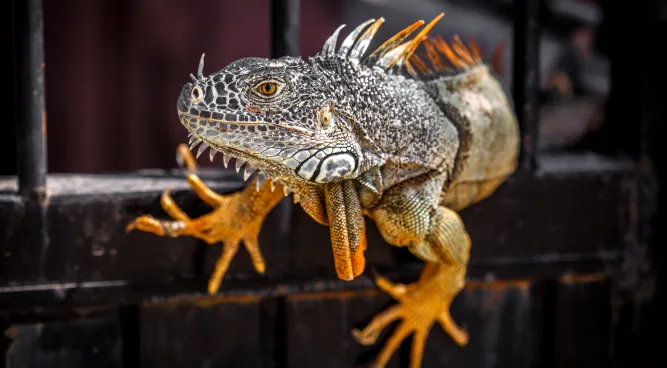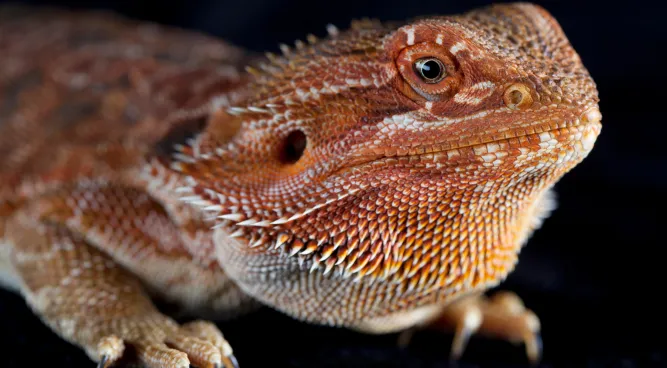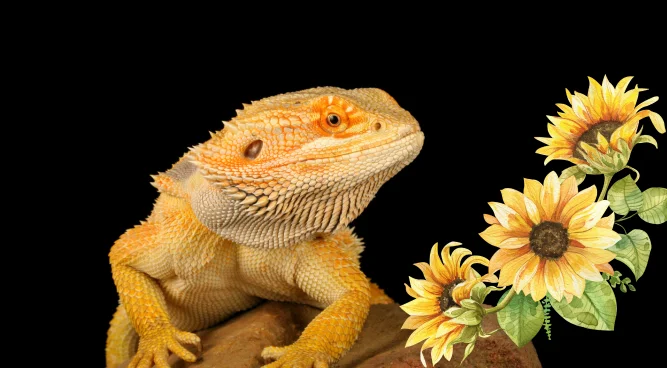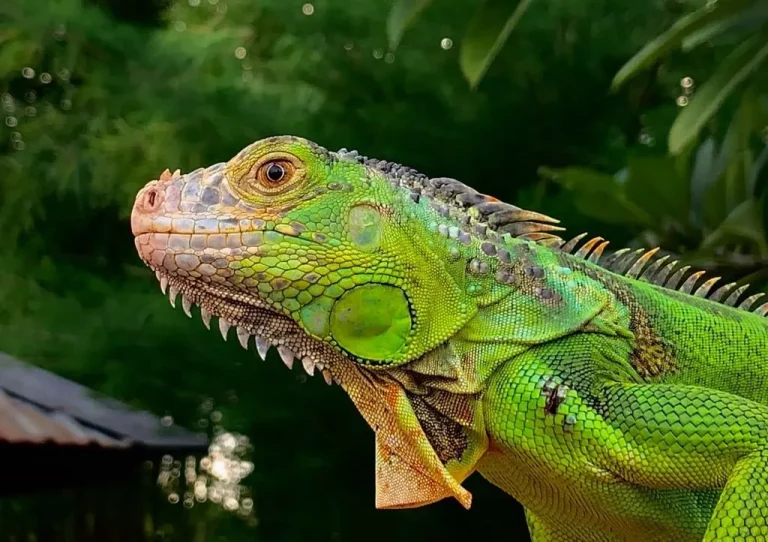Citrus Bearded Dragon: Info, facts, Diet & Care Guide
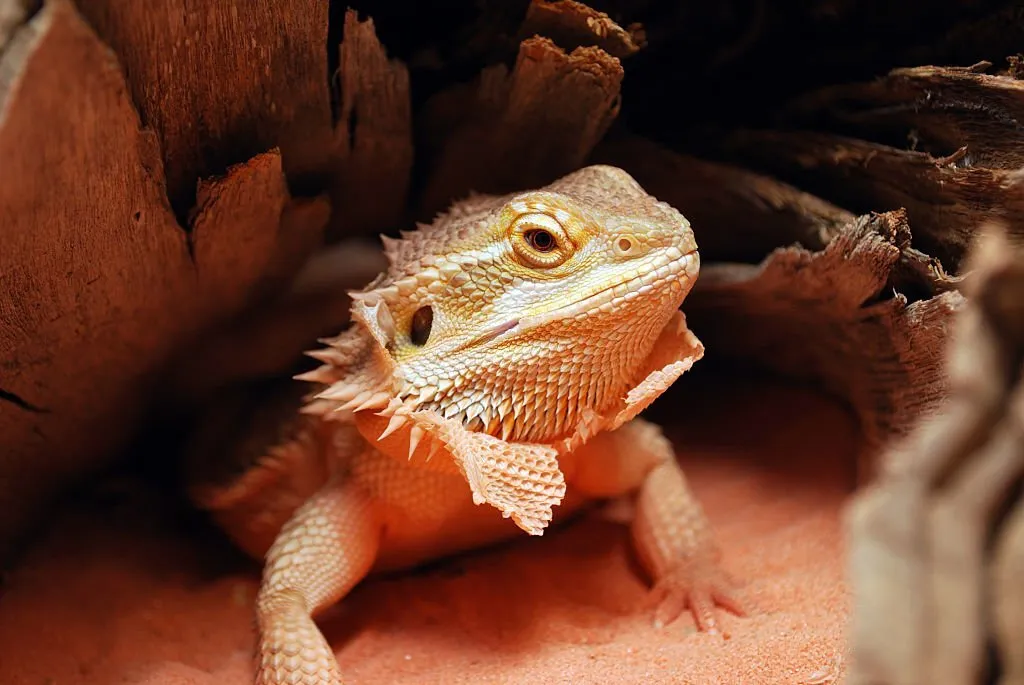
Table of Contents
The Citrus Bearded Dragon is a fascinating reptile that makes a great exotic pet. With their laidback personalities and manageable care needs, these bearded dragons are perfect for beginner reptile owners. Read on to learn more about the appearance, behavior, enclosure setup, diet, health, and breeding of Citrus Bearded Dragons.
Appearance and Size
Citrus Bearded Dragons have a stocky build with a triangular-shaped head. They are medium-sized lizards measuring 16-24 inches when fully grown. Some key features of their appearance include:
Colors
These dragons are called “citrus” for their bright orange and yellow coloration. They have yellowish-orange bodies with slight dark mottling on the back and sides. The throat is also yellow. The tail may have bands of darker color.
Body Features
Citrus Bearded Dragons have a spiny appearance thanks to the rows of spikes running along their sides and backs. They have a beard made of spiky scales under the throat that can be puffed up. Their toes are long and equipped with sharp claws for climbing.
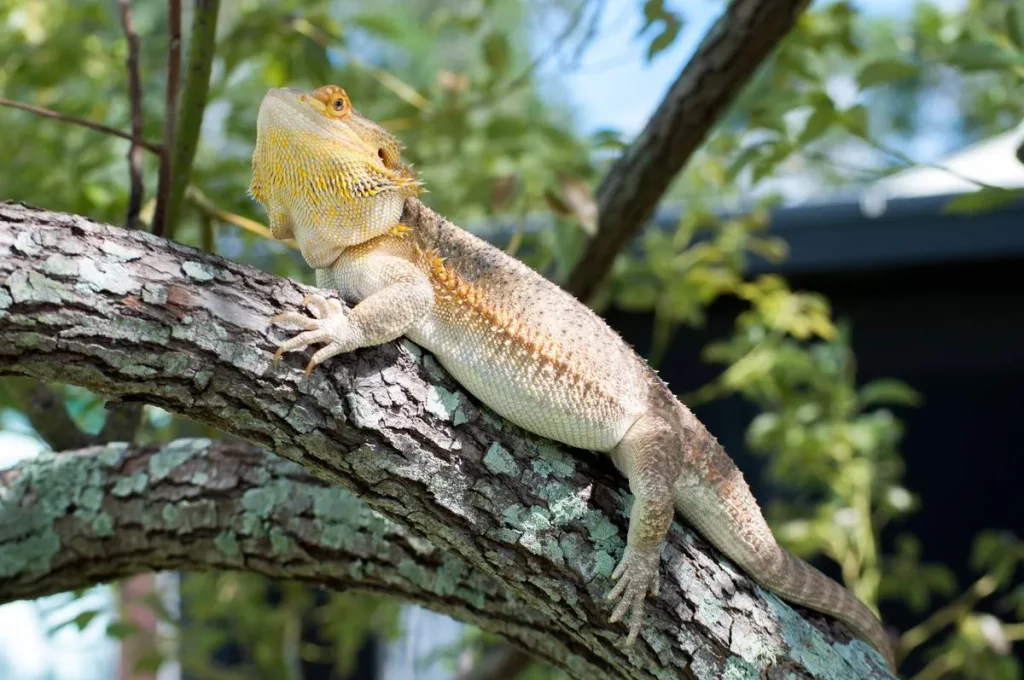
Quick Facts about Citrus Bearded Dragon
| Characteristic | Description |
|---|---|
| Scientific name | Pogona vitticeps |
| Common name | Citrus bearded dragon |
| Size | 18-24 inches long |
| Weight | 0.5-2 pounds |
| Lifespan | 8-12 years |
| Diet | Omnivorous, with a diet consisting of insects, vegetables, and fruits |
| Habitat | Dry, arid regions of Australia |
| Behavior | Solitary animals that are active during the day |
| Reproduction | Oviparous, laying eggs in clutches of 20-50 |
Temperament and Behavior
Citrus Bearded Dragons are calm. They aren’t quick to run away and often sit still when approached. Here are some key behaviors:
Activity Level
These reptiles spend much of the day basking. They are moderately active and enjoy exploring their enclosure when given the opportunity.
Handling
With regular handling, Citrus Bearded Dragons become quite docile. They often seem to enjoy human interaction.
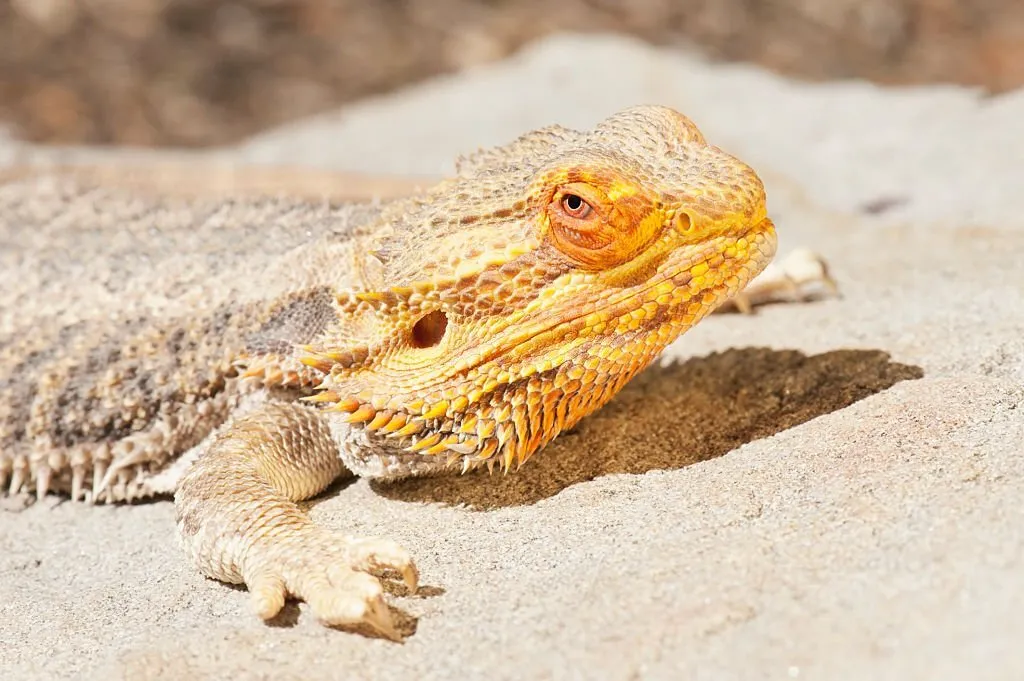
Enclosure Setup
Providing proper housing is key to keeping a healthy Citrus Bearded Dragon. Here are some enclosure guidelines:
Tank Size
Adults need a minimum tank size of 40-55 gallons. Juveniles can start in a 20-30 gallon tank.
Substrate
Avoid loose substrates like sand, as they can cause impaction. Best options include paper towels, reptile carpets, or tiles.
Decor
Add climbing branches, hammocks, and artificial plants. A background helps them feel secure.
Lighting and Temperature
Citrus Dragons require a temperature gradient to self-regulate their body temperature.
Basking Spot
Have a hot basking spot at one end of the tank reaching 95-100°F. Use overhead heat lamps to create the basking area.
Nighttime Temps
Temperatures can safely drop to 70-75°F at night. Use a ceramic bulb or under-tank heater to maintain heat.
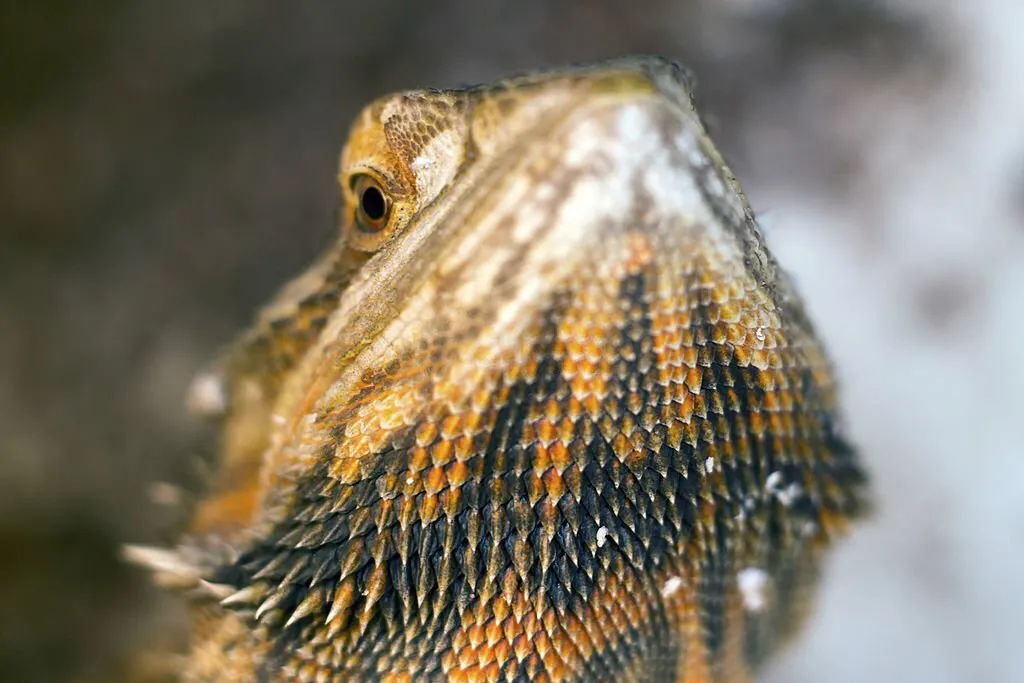
Diet and Nutrition
Citrus Dragons are omnivores eating both plant and animal matter. Follow these diet guidelines:
Diet Summary
| Age | Daily feeding schedule | Food |
|---|---|---|
| 0-3 months | Feed 3-4 times a day | Live insects, chopped vegetables, and fruits |
| 4-6 months | Feed 2-3 times a day | Live insects, chopped vegetables, and fruits |
| 7-12 months | Feed 1-2 times a day | Live insects, chopped vegetables, and fruits |
| Adults | Feed 1-2 times a day | Live insects, vegetables, and fruits |
Feeders
Feed a variety of gut-loaded insects like crickets, worms, roaches, and flies. Offer veggies too.
Supplements
Dust insects with calcium powder 5 days per week and multivitamins 2 days per week.
Water
Provide fresh water in a shallow bowl changed daily. Mist tank daily.
| Food | Amount | Frequency |
|---|---|---|
| Live insects | 2-4 tablespoons | Daily |
| Vegetables | 1-2 tablespoons | Daily |
| Fruits | 1 tablespoon | 2-3 times per week |
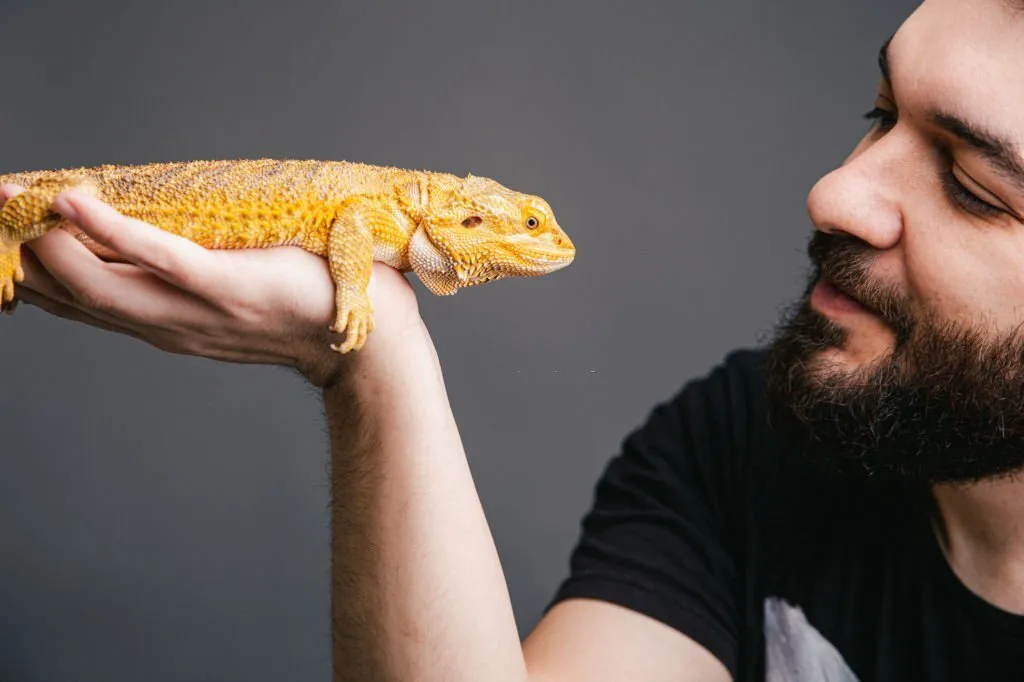
Grooming and Hygiene
To keep your dragon looking their best:
Nails
Trim nails monthly to prevent overgrowth. Use reptile nail clippers.
Baths
Give occasional lukewarm baths for hydration and shedding assistance.
Health and Common Issues
Citrus Bearded Dragons are hardy when cared for properly. Health issues to watch for include:
| Health issue | Symptoms | Treatment |
|---|---|---|
| Metabolic Bone Disease (MBD) | Soft jawbones, swollen limbs, lethargy, loss of appetite | Calcium and vitamin D3 supplements, UVB lamp |
| Impaction | Constipation, lethargy, loss of appetite | Laxatives, surgery |
| Parasites | Weight loss, diarrhea, lethargy | Antiparasitic medication |
| Respiratory infections | Sneezing, wheezing, difficulty breathing | Antibiotics |
| Burns | Red, blistered skin | Veterinary care |
| Skin infections | Blisters, scabs, redness | Topical antibiotics |
Parasites
Intestinal parasites like coccidia and pinworms. Have fecal exams done yearly.
Metabolic Bone Disease
Caused by calcium/vitamin D3 deficiency and improper lighting. Signs include jerky movements and soft jaws.
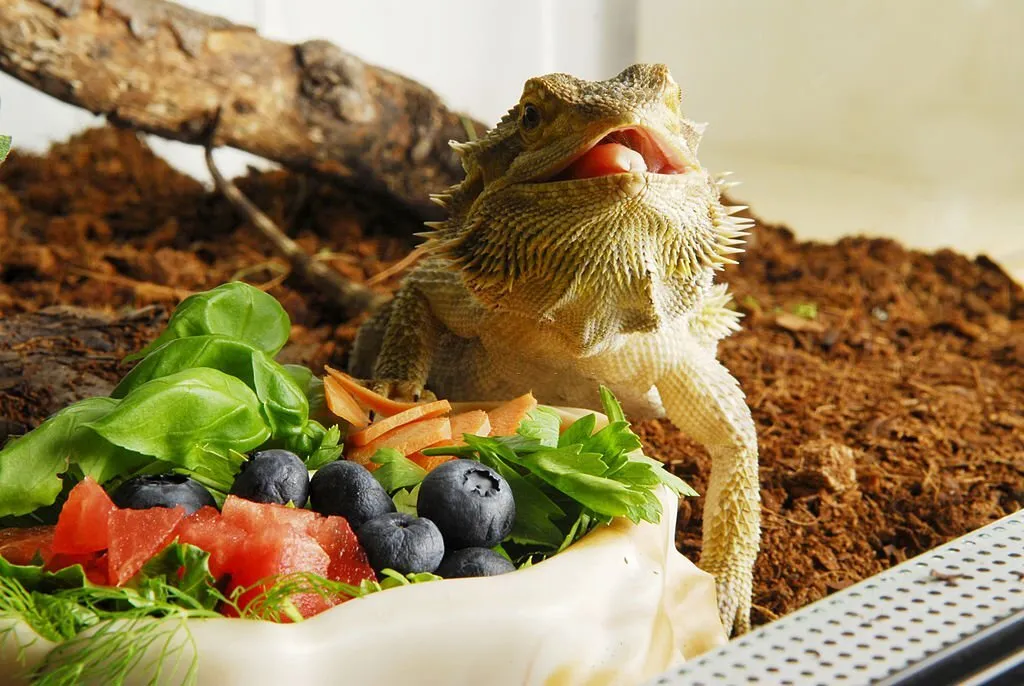
Breeding
With proper care, Citrus Bearded Dragons can reach breeding age at 8-18 months old. The female will lay 20-40 eggs in a clutch. Hatchlings emerge 2-3 months later. Get more Info about reptiles.
Lifespan
When kept healthy, these Citrus Dragons can live 6-10 years or longer.
Buying a Citrus Bearded Dragon
Begin your search here: Citrus bearded dragon for sale
Breeder vs. Pet Store
It’s best to buy from a reputable breeder. Avoid pet stores where they are often poorly cared for.
Cost
Expect to pay $50-$150 for a Citrus Bearded Dragon depending on age and color morph.
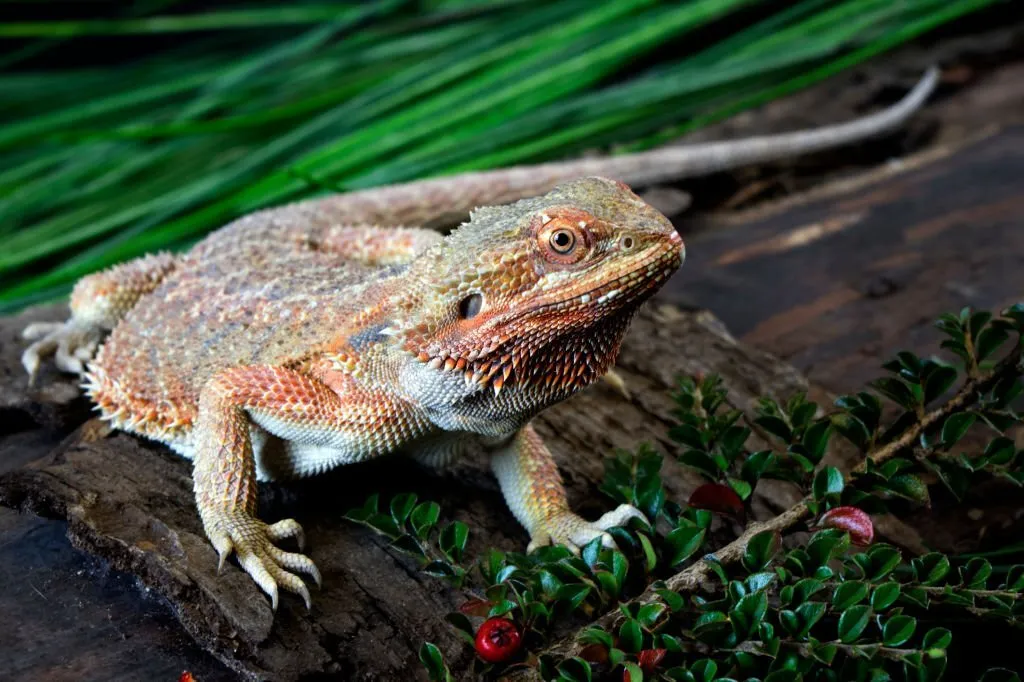
FAQs
How big do Citrus Bearded Dragons get?
Citrus Bearded Dragons reach 16-24 inches in length when fully grown.
What veggies can Dragons eat?
Good veggie options include kale, collard greens, mustard greens, turnip greens, endive, carrot tops, bell peppers, butternut squash, green beans, zucchini, sweet potato, snap peas, basil, figs, berries and more.
Do Citrus Dragons bite?
Healthy Citrus Bearded Dragons rarely bite. Niping may occur if they feel threatened. With regular handling, any nipping behavior usually stops.
Do Bearded Dragons need a heat lamp at night?
No, Bearded Dragons do not require overhead heating at night. Simply maintain the overall ambient temperature in the 70s F.
How often should you handle a Bearded Dragon?
Aim for 10-20 minutes of handling per day while the dragon is alert and active. This allows them to become comfortable with interaction.
Final Thought
With their calm personalities and relatively simple care, Citrus Bearded Dragons make fantastic pets. They are active and interesting to observe and become quite tame. By providing the proper enclosure, heating, light, diet, and more, you’ll have a happy, healthy dragon companion.


